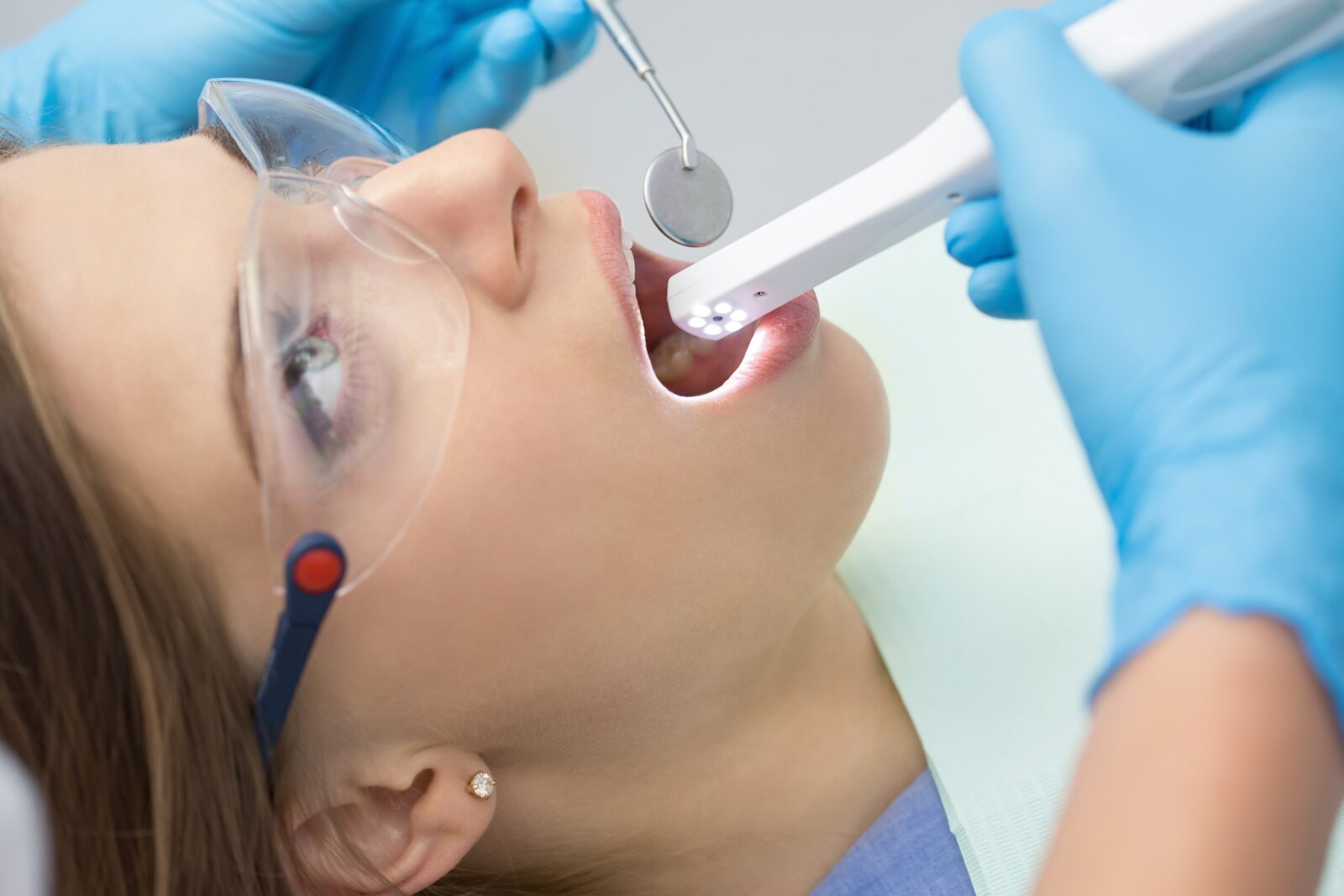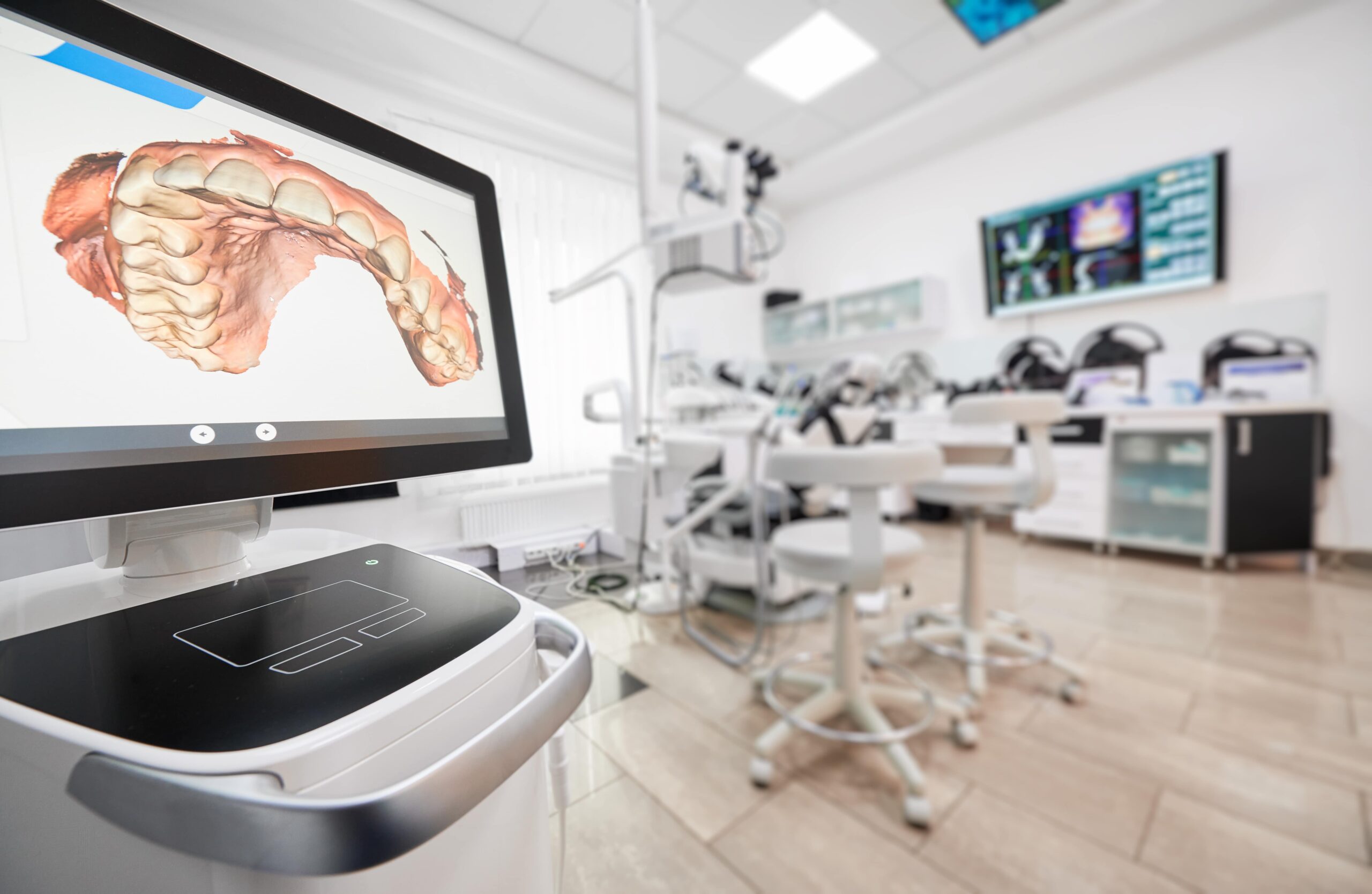In the dynamic world of cosmetic dentistry, the advent of digital imaging technology stands as a beacon of progress, revolutionizing how dental professionals plan and execute cosmetic procedures. This blog delves into the profound impact of digital imaging, a tool that has not only enhanced the precision of cosmetic dental treatments but also empowered patients in their journey towards achieving the perfect smile.
The Evolution of Digital Imaging in Dentistry
The journey from conventional X-rays to sophisticated digital imaging is a testament to the relentless pursuit of excellence in dental care. Traditional methods, while foundational, offered limited insights, often at the expense of patient comfort and exposure to radiation.
Today, technologies like 3D scanning and digital radiography have set new standards. These advancements provide unprecedented clarity and detail, enabling dentists to view dental structures in ways that were once unimaginable.
Modern Digital Imaging in Dentistry
Digital imaging techniques have become integral to modern dentistry, enhancing diagnostic capabilities, treatment planning, and patient care. Here are some of the key digital imaging techniques used in dentistry today:
Digital Radiography:
This replaces traditional film with digital sensors, resulting in less radiation exposure and instant images. There are two types:
- Intraoral Digital Radiography: Used for detailed images of individual teeth or small sections of the mouth.
- Extraoral Digital Radiography: Includes panoramic images and cephalometric projections, useful for orthodontic assessment and treatment planning.
Cone Beam Computed Tomography (CBCT):
CBCT provides 3D images of dental structures, soft tissues, nerve paths, and bone. It’s especially useful for implant planning, evaluation of jaw abnormalities, and endodontic diagnosis.
Intraoral Cameras:
These small, handheld devices capture detailed images inside a patient’s mouth. They are excellent for patient education, helping patients visualize and understand their dental conditions and treatment options.

Digital Impressions:
Advanced scanners are used to create digital impressions of teeth and gums. These are more comfortable for patients compared to traditional impression materials and are used for creating dental restorations like crowns, bridges, and orthodontic devices.
Digital Smile Design (DSD):
This is a multi-use conceptual tool used for diagnostic, communication, and design purposes. It involves the use of digital photography and videography to analyze a patient’s facial and dental structures and plan cosmetic dental treatments.
Teledentistry and Digital Communication Tools:
While not strictly imaging, these digital tools have become essential in modern dentistry for remote consultations, sharing images and information, and for better communication between dental professionals and labs.
Laser Scanning:
Dental laser scanning can be used for detecting cavities and for soft and hard tissue applications. It offers a more comfortable experience for the patient and can be more precise in certain applications.
Each of these techniques offers unique benefits, from improved diagnostic accuracy and treatment planning to enhanced patient comfort and engagement. As technology continues to advance, the role of digital imaging in dentistry is likely to grow even further.
Benefits of Digital Imaging in Cosmetic Dentistry
Digital imaging technology has significantly transformed the field of cosmetic dentistry, offering numerous benefits both to dental professionals and patients. Some of the key advantages include:
Enhanced Diagnostic Accuracy:
Digital imaging provides high-resolution, detailed images that allow for more precise diagnosis of dental issues. This accuracy is crucial for planning cosmetic procedures effectively, ensuring that underlying problems are addressed before aesthetic treatments.
Improved Treatment Planning:
Digital images enable dentists to plan treatments with greater precision. They can simulate different outcomes and make adjustments before the actual treatment, ensuring optimal results. This is particularly valuable for procedures like veneers, crowns, orthodontics, and implants.
Visualization and Simulation:
Using digital imaging, dentists can create simulations of what a patient’s smile might look like post-treatment. This visual representation helps patients to understand the potential outcomes and set realistic expectations, enhancing their confidence in the treatment.
Patient Engagement and Education:
Digital images are an excellent tool for patient education. They help in explaining the dental issues and the proposed treatment plan more effectively, leading to better patient engagement and informed decision-making.
Minimally Invasive Procedures:
Some digital imaging techniques, like intraoral scanners, are less invasive and more comfortable for patients compared to traditional methods. This aspect can be particularly appealing for patients who are anxious about dental procedures.
Reduced Treatment Time and Increased Efficiency:
Digital imaging speeds up various aspects of the treatment process. For instance, digital impressions for restorations like crowns or bridges are quicker and more efficient than traditional mold-taking methods.
Collaboration with Dental Laboratories:
Digital images can be easily shared with dental laboratories, facilitating better communication and collaboration. This ensures that the restorations created are more accurate and fit better, reducing the need for adjustments.
Long-term Monitoring and Comparison:
Digital images can be stored efficiently and retrieved easily for future reference. This allows for effective monitoring of the patient’s oral health and progress over time, and comparison of pre- and post-treatment conditions.
Eco-Friendliness:
Digital imaging reduces the need for chemicals and materials used in traditional film-based imaging, making it a more environmentally friendly option.
Cost-Effectiveness:
Over time, digital imaging can be cost-effective for dental practices. Although the initial investment in digital imaging equipment can be high, the savings in materials, time, and improved workflow efficiency can compensate for the initial costs.
In summary, digital imaging in cosmetic dentistry not only enhances the quality and effectiveness of dental care but also improves patient experience and satisfaction, ultimately leading to better dental outcomes.
Conclusion
The role of digital imaging in cosmetic dental planning cannot be overstated. It has not only enhanced the precision and efficiency of treatments but also enriched the patient experience, making the dream of a perfect smile more attainable than ever. As technology continues to evolve, we can only anticipate further innovations that will continue to shape the future of cosmetic dentistry.



